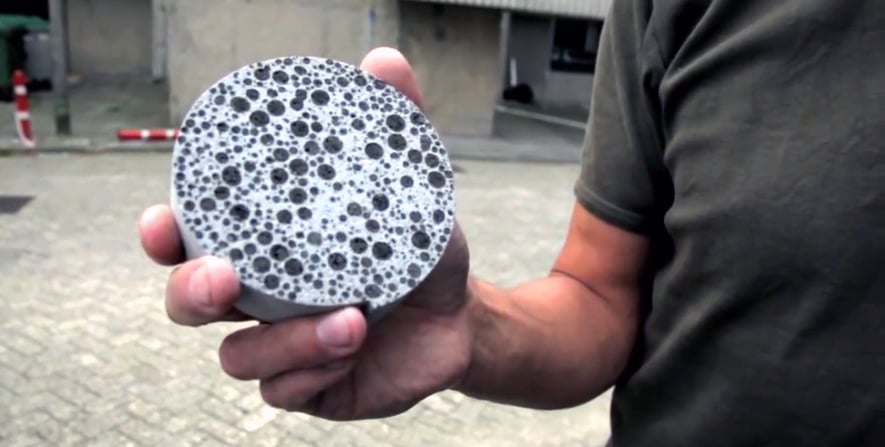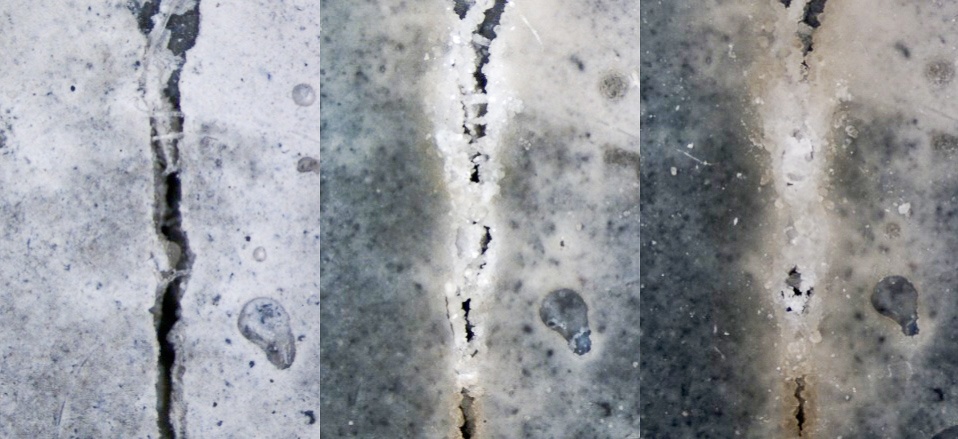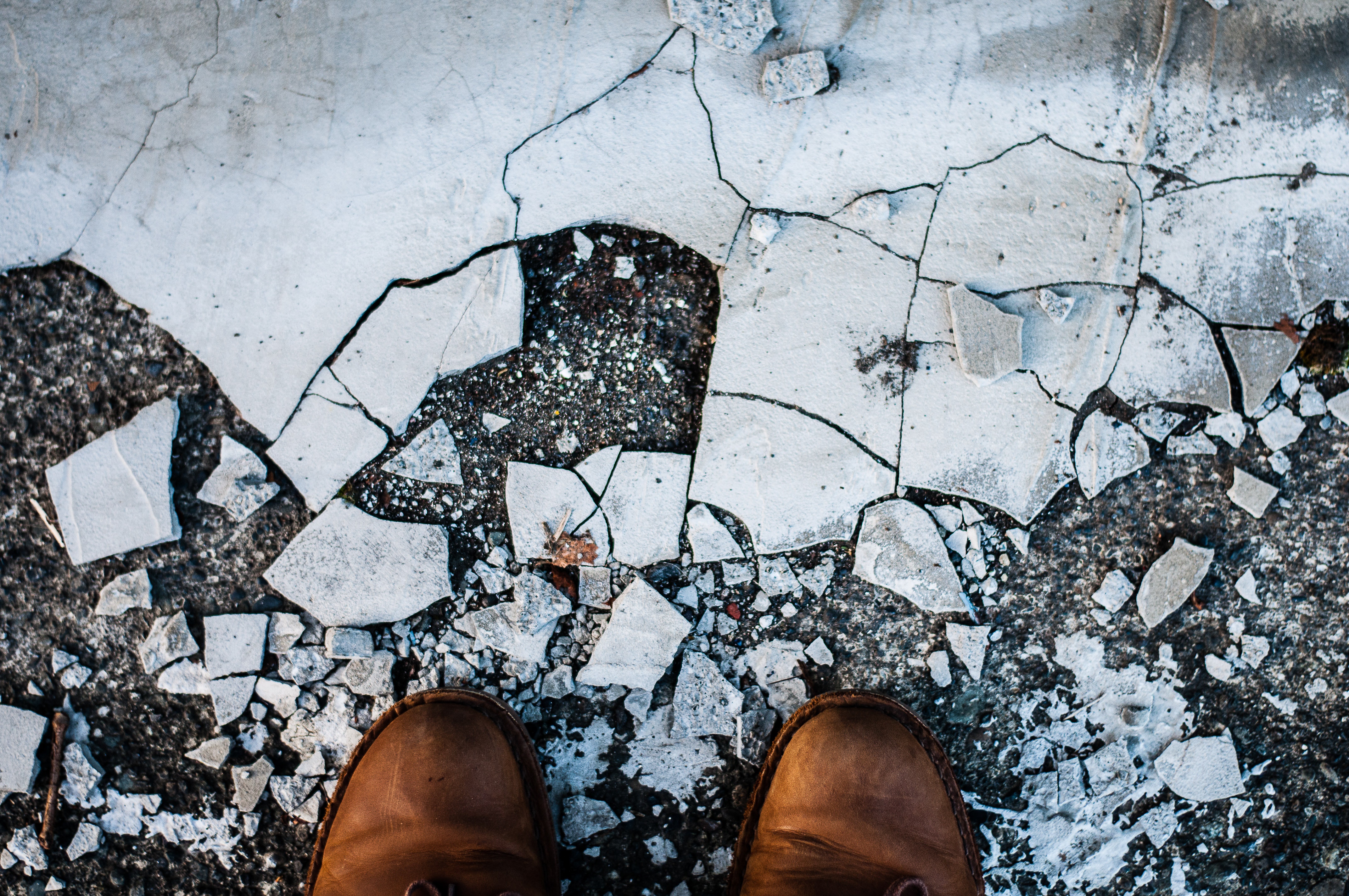Wouldn't it be nice if your concrete structure never cracked?
Concrete is one of the most trusted and adaptable material inputs used in construction. Despite being considered a very durable and strong material, it is highly prone to cracking and erosion. Such limitations see that concrete is in fact not as a resilient material as first assumed. Generally, concrete structures are designed to allow small cracks which are considered to not be too detrimental to the building. But when these crevices become bigger, we start to see problems. Cracks in the structure create a path for potentially harmful substances to attack the concrete. As these substances reach the reinforcement it begins to corrode it, increasing the chances for structural failure.
So is there a way to increase the lifespan of concrete, preventing corrosion and making it more sustainable and resilient?

Image 1: Shows a piece of the Bio Concrete (self-healing concrete) [1]
Self-healing concrete
A European microbiologist, Hendrik Jonkers believes he has found a solution by investigating the opportunity for ‘self-healing’ concrete. Drawing inspiration from the human body’s ability to repair bones, Jonkers found certain bacteria can be used to regenerate and close cracks in concrete structures without human involvement. [4] This Self-healing concrete could potentially solve the problem of concrete deterioration increasing the life span of concrete structures. This material is also designed to reduce the amount of new concrete required and decreasing the maintenance cost for existing structures.
How does it work?
2 specific forms of bacteria - Bacillus pseudofirmus and Sporosarcina pasteurii– are added into the concrete in small capsules. The capsules also contain a food source for the bacteria – calcium lactate (2). Once contact with water occurs from a crack in the concrete, the capsules dissolve and the bacteria feeds on the lactate, multiplying, and producing limestone or calcite. This fills in any cracks and stops any substances entering the concrete.Once the crack is sealed and water can no longer seep into the concrete, the bacteria becomes dormant again only reactivated upon contact with water.The bacteria are able to survive up to 200 years without any oxygen or water so this process can continue for the lifetime of the concrete. [3]

Image 2: Shows Bio Concrete healing itself [5]
What forms does it come in?
Currently, self-healing concrete can heal cracks in concrete up to 0.8mm in approximately 28 days and comes in three forms:
- Spray - can be applied to already built structures, healing small cracks that need repair
- Repair mortar - used for healing larger structural damage in built structures
- Self- healing concrete that contains the bacteria capsules [5]
Commercial availability
Despite being tested with successful results self-healing concrete is still in the early stages of commercialisation. We believe it will take another few years for this amazing product to be available in Australia at a reasonable price.

Give us a call if you want to use this material in your next project!
*******
Works Cited
|
[1] |
"Smart concrete alone meets the cracks," 28 05 2015. [Online]. Available: http://bi.mk/pameten-beton-sam-gi-ispolnuva-puknatinite/. |
|
[2] |
IFL Science, "Self-Healing Concrete Repairs Its Own Cracks," 18 05 2015. [Online]. Available: http://www.iflscience.com/chemistry/self-healing-concrete-repairs-its-own-cracks/. |
|
[3] |
K. V. T. J. W. A. M. J. F. A. G. D. A. Y. C. E. T. V. M. X. Z. P. R. (Didier Snoeck, "Self-healing of Concrete," [Online]. Available: https://www.ugent.be/ea/structural-engineering/en/research/magnel/research/research3/selfhealing. |
|
[4] |
D. Arnold, "Self - Healing concrete," Ingenia, 03 2011. |
|
[5] |
D. University, "Self-Healing Concrete Can Repair Its Own Cracks with Bacteria," [Online]. Available: The bioconcrete healing itself (Image Courtesy of Delft University). |
|
[6] |
European Patent office, "“Bio-concrete” set to revolutionise the building industry: Dutch inventor of self-healing concrete named finalist for European Inventor Award," 21 04 2015. [Online]. Available: https://www.epo.org/news-issues/press/releases/archive/2015/20150421i.html . |
|
[7] |
R. Spinks, "The self-healing concrete that can fix its own cracks," 29 06 2015. [Online]. Available: https://www.theguardian.com/sustainable-business/2015/jun/29/the-self-healing-concrete-that-can-fix-its-own-cracks. |









